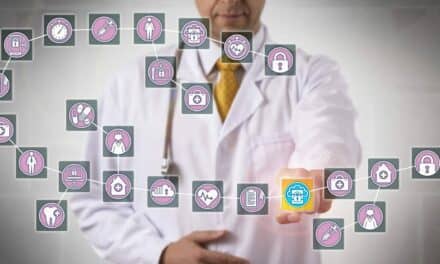By George Gray
2020 is certainly going to be a year to remember. As the entire healthcare industry works through the impacts of a global pandemic, it’s also pushing itself toward renewed thinking around elevating the quality of care, improving the patient’s experience, and ensuring that safety is paramount.
Leveraging data, analytics, and advanced machine learning are all things that can support that transition. And, through the right applications, they can help improve patient outcomes over time.
Increasing Patient Centricity
Today, patients are more knowledgeable about healthcare and tech than in the past. COVID-19 has shown us just how important it is to empower patients and treat them as valued partners in managing their own care. Even prior to the pandemic, the U.S. Department of Health and Human Services (HHS) finalized its patient access rules, driving interoperability and increased access to patients’ own data for more informed, personal healthcare decision-making. And now, the pandemic is underscoring how the healthcare industry needs to do its part to advance interoperability and better leverage real-time data to engage patients and enhance care.
However, what the industry needs to understand is that interoperability is more than just exchanging data between systems. If not applied in a way that enables clinicians to make well-informed decisions, it won’t have the impact needed to significantly improve patient care. And with all the investments healthcare systems are making today, interoperability, data analytics, and machine learning will not be embraced until it is clear they can improve outcomes, operational efficiencies, and/or the cost of care.
Reducing Device-Related Patient Harm
Infusion delivery provides a key example of how adopting interoperability and real-time data insights can help enhance care and safety. Today, infusion pumps are swarming with preventable injuries and recalls. Research shows that of the approximately 1.5 million adverse drug events reported to the U.S. FDA every year, 54% are related to infusion-pump errors, and 61% of those events are serious or life-threatening. These are alarming statistics when you consider that 90% of patients will receive an IV during a hospital stay.
Today’s pumps have begun addressing some of these issues by leveraging electronic health record (EHR) interoperability, sending medication orders to the pump and infusion data back to the patient record. But more can be done. For example, most pumps are unable to measure the flow of medications delivered to the patient. Instead, these pumps rely on the calibration performed by the vendor within the manufacturing process.
Unfortunately, being blind to this form of real-time data can lead to inaccuracies and inconsistencies in how medications are infused. Many major pumps also err on the side of having small displays, limiting their ability to provide information to clinicians.
The opportunity in the infusion pump arena comes with the introduction of new, tech-enabled solutions that use information to enhance patient safety and reduce adverse drug events. This begins with the ability to interoperate with a wide variety of systems (i.e., vital signs, clinical labs, and more), and using this data to identify and inform clinicians of potential risks.
This extends into the EHR as well, allowing the pump to leverage information in the patient’s chart to help in that risk assessment. Though today’s pumps are considered “smart,” they are not intelligent enough to leverage vital signs, labs, and other patient-specific information contained within the EHR. With this information available, pumps could do a better job of assessing the risk of administering a medication.
A truly patient-centered infusion pump must also be able to share information with other systems and devices connected to the patient. This includes sharing information with other infusion pumps, which could use infusion data to determine whether its infusion, when given simultaneously with other ongoing infusions, could increase risk for a patient. With systems and devices interoperating in this manner, clinicians can put the focus back on their patients.
Reducing moral distress is another key benefit of interoperability and real-time data. Health system staff, including clinicians and nurses, have various responsibilities, and even more so during a pandemic. Eliminating or automating manual data entry as well as the effort of synthesizing and processing a wide range of patient information goes a long way in reducing human error and the stresses associated with patient care.
With their patients’ data in hand, care teams have an opportunity to fine-tune their decisions in real time and be more vigilant about the care of their patients. In tangible terms, it is an opportunity to significantly reduce preventable deaths and injuries while significantly improving the care experience.
Now, more than ever, the healthcare community has a unique opportunity to mobilize these technologies and provide insights that heighten patient-centered care.
George Gray is CTO of Ivenix. Questions and comments can be directed to 24×7 Magazine chief editor Keri Forsythe-Stephens at [email protected].




